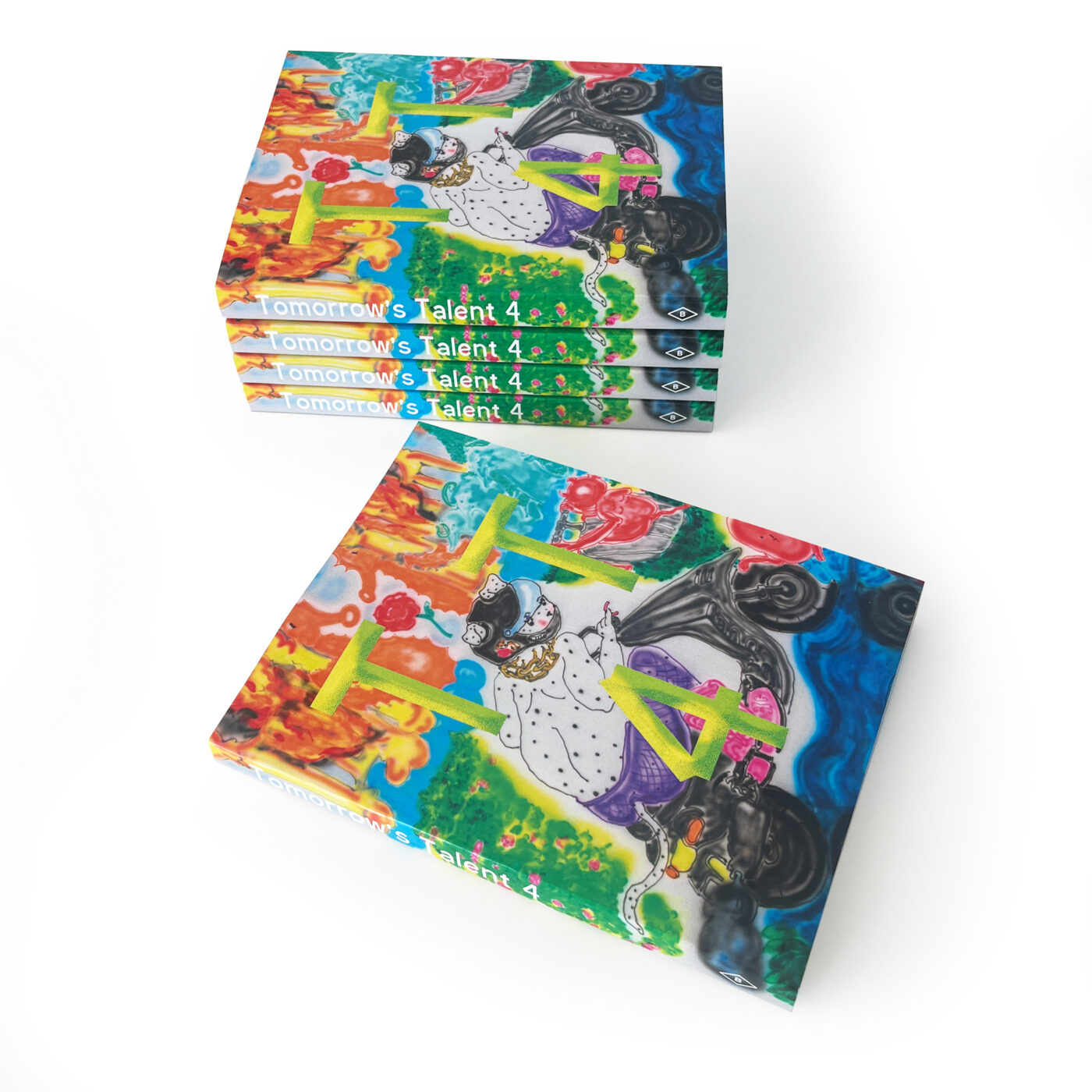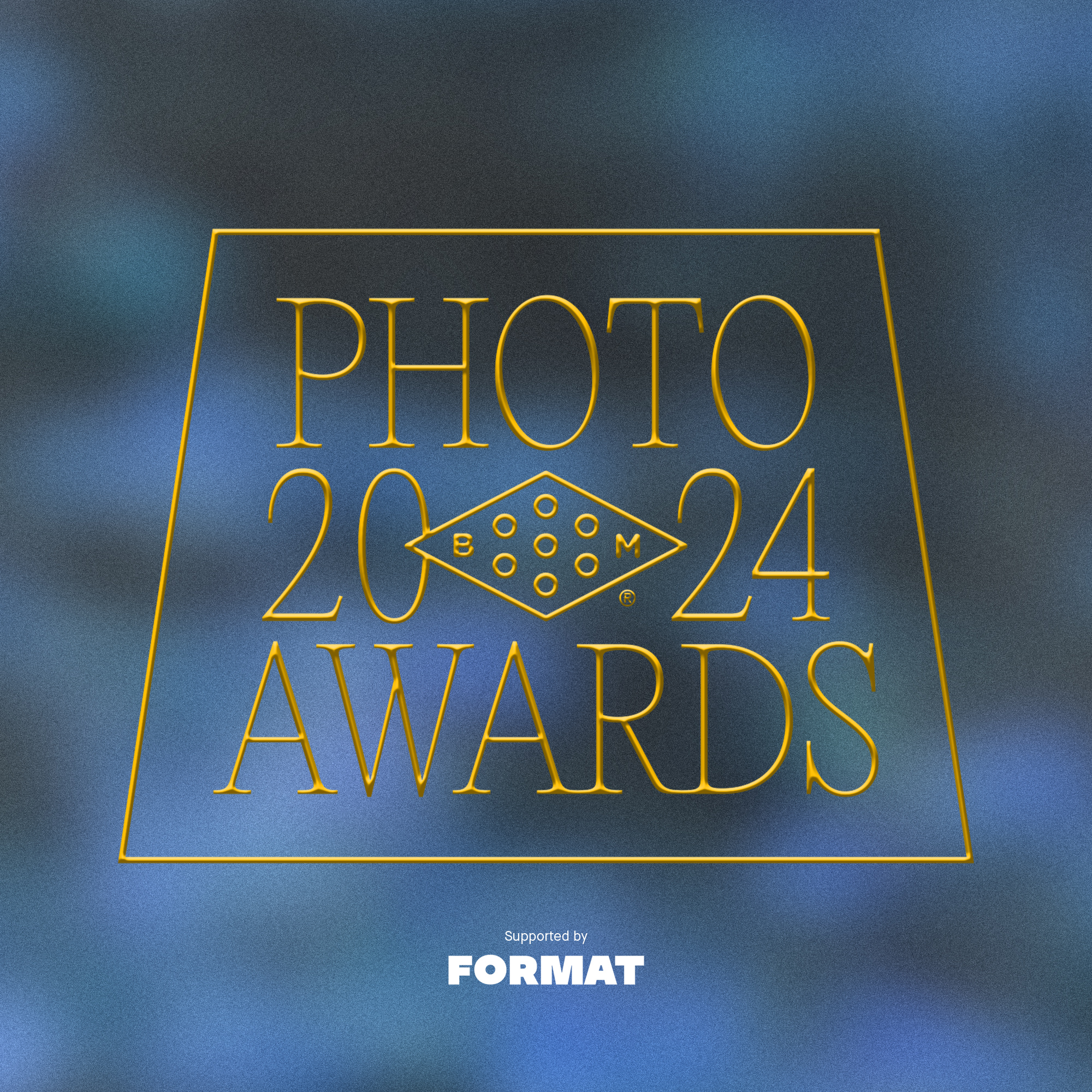Passion Projects is an on-going series where we ask our members, ‘What creative thing would you do with $500?’ This edition was supported by Society6 who were as excited as we were to give an emerging artist a little motivation to create whatever they wanted.
From the many proposals we received, we selected Las Vegas-based artist and photographer Mikayla Whitmore. We’re proud to have supported her, and very excited to share her passion project with you now!
If you’d like to be eligible for opportunities like this, you can learn more about becoming a member here. Stay tuned for our next call for proposals!

Holly
Jeff Hamada: Whenever I visit Las Vegas it’s always such a strange experience. What’s it like living there?
Mikayla Whitmore: I was born and raised in Las Vegas in 1988 at the Women’s Hospital which is now a parking lot. Growing up here, I never realized how strange it was. Beyond the Strip and the Las Vegas that is presented in pop culture, Vegas is a place rooted in community and surrounded by desert. Vegas is juxtaposed between being a big city and a small town. The casinos are always trying to outdo each other with flashy gimmicks and PR stunts, Michelin rated Chefs and food, with a slew of entertainment. Beyond the glint of the strip, is a flourishing community visually rich to pull inspiration from. Growing up here, everyone knows everyone and we hold onto those who really invest in and cherish this city.
Vegas is 24/7 culture. There is no shortage of vanity license plates or strip malls. Someone is always starting their shift and or getting off. No matter what you want, when you want it, you can probably find it. One of my favorite things used to be grocery shopping at 3 AM. I always take it for granted until I travel and realize there is a last call.
One thing that has impacted me a lot is the constant state of turmoil Las Vegas is in — the landscape is in a constant state of flux and decay. Nothing is sacred and the city does not preserve our landmarks or history well. The fragility and uncertainty of this city have enhanced my desire towards using a camera to capture images or moments in time that may not occur again.

Lance
JH: It seems like more and more art stuff has been happening out there in the last few years — Seven Magic Mountains and the Life is Beautiful murals — does it feel like there’s more creative energy there now?
MW: Yes. Vegas has always been filled with a vast source of visual information to be inspired from and more importantly a very talented core of artists who are working professionally come in and out of the state — however recently it seems to be gaining more popularity on a national level making it easier to get attention and opportunities.
We have been getting a lot of sports teams, including the NFL Raiders and Vegas Golden Knights, bringing in a different type of tourism which is not strictly gambling based. Already Meow Wolf has invested and building their largest scale facility yet. With the extra tourism and funding, it is helping make a push for other types of cultural activities for tourists to enjoy.
We don’t have a huge art museum. We have gems like the Marjorie Barrick Musuem of Art along with scattered works across The Strip mixed in amongst slot machines and water fountains. This speaks to how unique and strange Vegas is… we do not have an institutional art museum, but we have a James Turrell piece called Akhob located in the attic of a Louis Vuitton store at the Crystals that’s free to view by appointment. I think the next few years will be really exciting because we are seeing a shift in ways to generate revenue and invest in creative areas making our city more of a cultural hub.

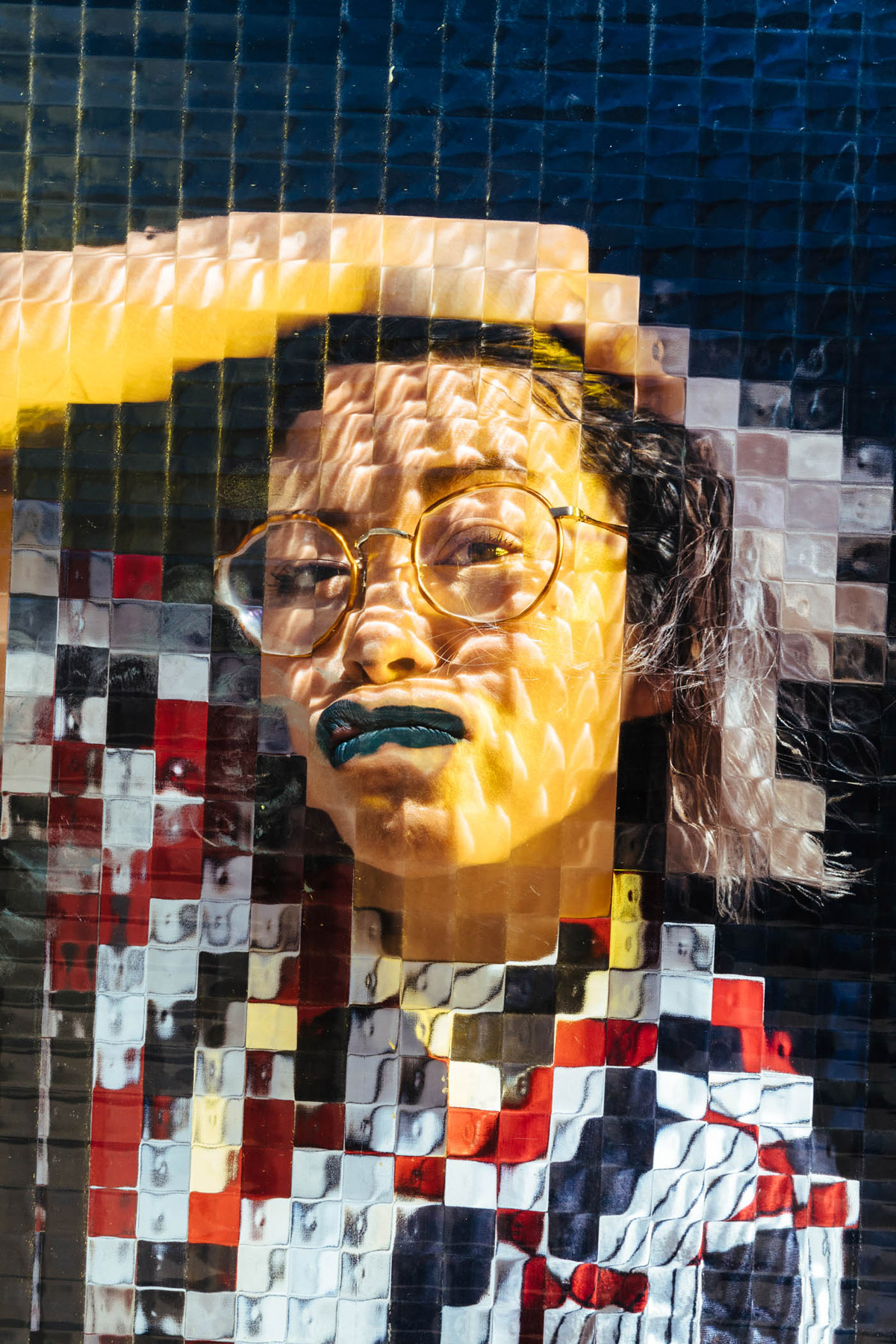
JH: You’ve been working as a photojournalist and as a fine art photographer, is it hard to find a balance?
MW: Absolutely. I think in general being a creative person and having any job is difficult. Being both a photojournalist and fine artist has presented a unique set of challenges since the medium and techniques I use tend to overlap. A lot of times, it is hard for people to grasp what I do since I shoot a little bit of everything. There has always been a long battle with the viewpoint that if you do commercial work you’re a sellout and if you make fine art, you’re just promoting emotional images that are blurry.
Depending on who I am shooting for (media outlet or myself) the intent of the image shapes the outcome, but overall a good image is a good image — and it’s my job to figure out what that is.
The more technical skills I acquire, the more specific I can get to create what I see in my mind. About a year and a half ago, I finally made the distinction to identify as an artist, instead of a photographer.
I think I am usually successful in most realms of image making I choose because I have started to address my connection with it. I am always visually reading light and the properties of it — and a camera is just a tool I use to capture it. The same way a painter uses paint or a ceramicist uses clay to sculpt. Light is my medium. I tend to think that I am live sketching with my camera when I am shooting, tinkering with a general idea until I finally hit onto what I really like. This is an important distinction for me, because at a time while cameras are so readily available and technology is advancing, it is difficult to compete.
"Depending on who I am shooting for (media outlet or myself) the intent of the image shapes the outcome, but overall a good image is a good image — and it’s my job to figure out what that is. "
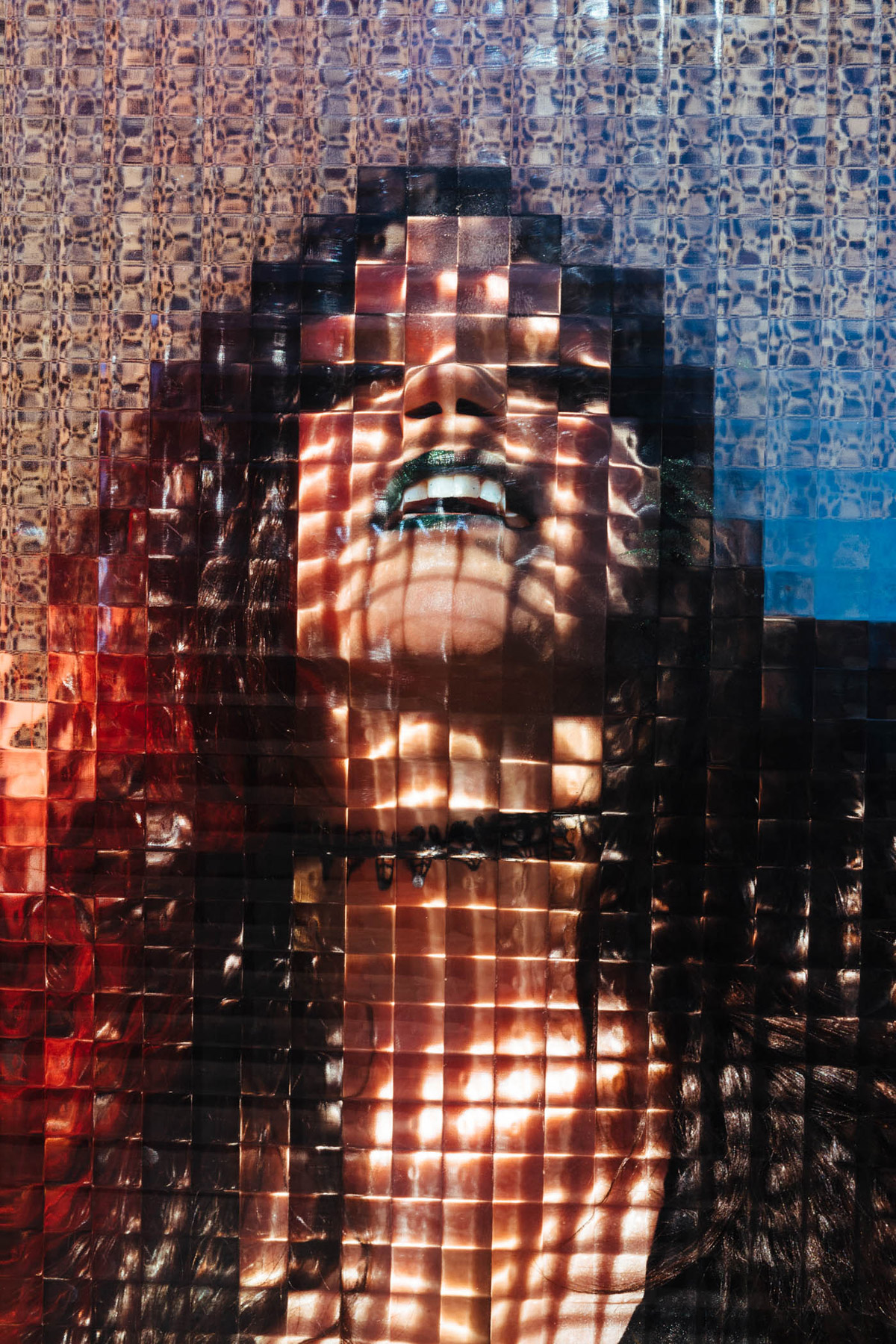
Jessenia
JH: If you could survive doing just the art would you focus on it completely or would you still want to do both?
MW: NO… just kidding, that would be a very confident YES PLEASE. If I could solely survive and support myself off of my art practice, that would be beyond amazing. I think like most artists, the dream would be to have the financial freedom to allow myself time and supplies to putz around and indulge in ideas without the overwhelming dread of how to provide for myself and avoid the cost of living.
I left my full-time job as a staff photographer for a local media company and have been freelancing for the past year. It has been one of the most rewarding times, but also super stressful. I am still struggling to find the balance to make enough money to live but not be trapped by a typical 9-5 type job.
Freelance has its moments, like trying to figure out what health insurance I should get and how to pay for it without losing my sanity. I always think I have time and little money or I have money and little time, so no matter what the odds are I just have to keep creating. The main goal is to win the Megabucks, but until then I am striving to find a happy medium.
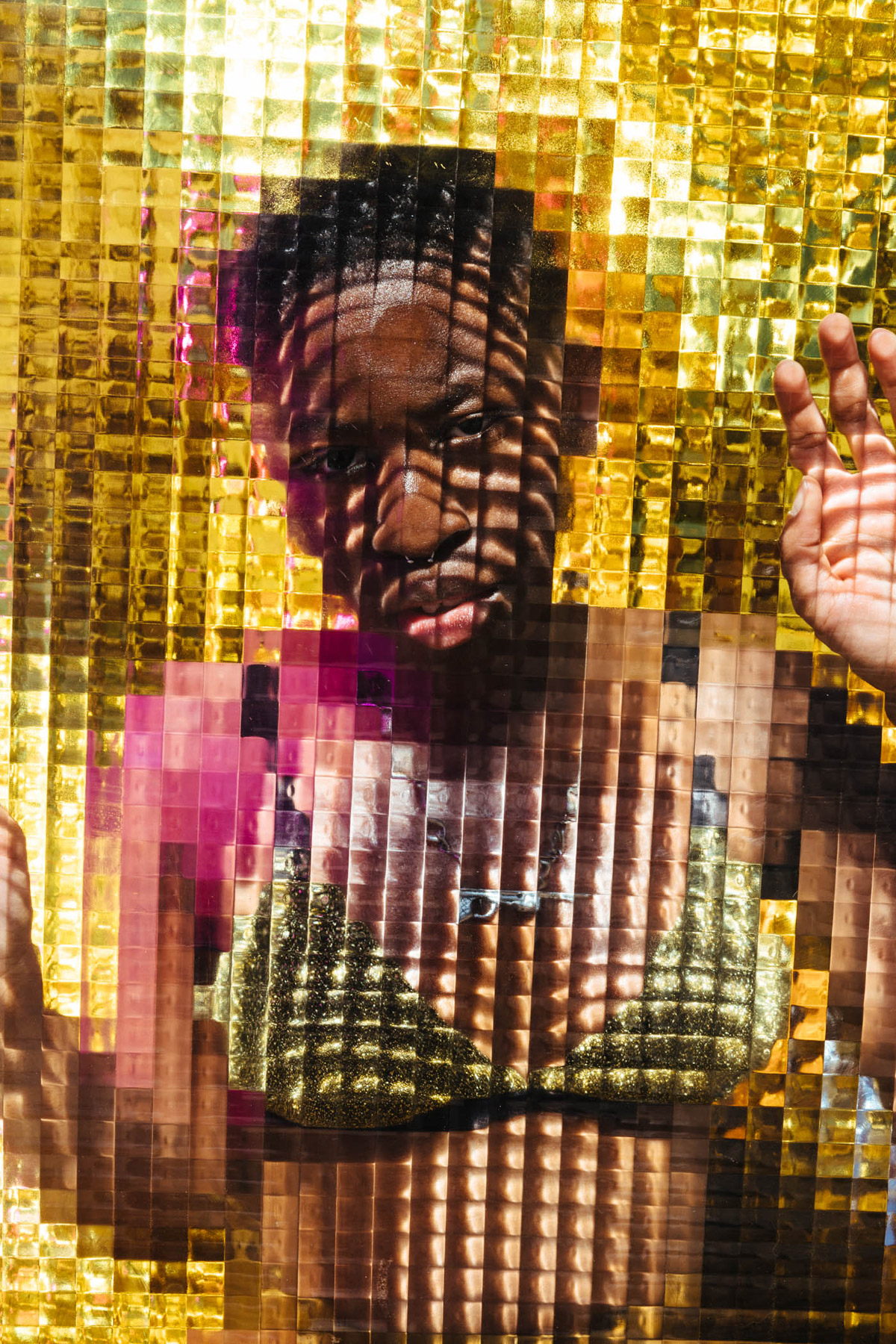
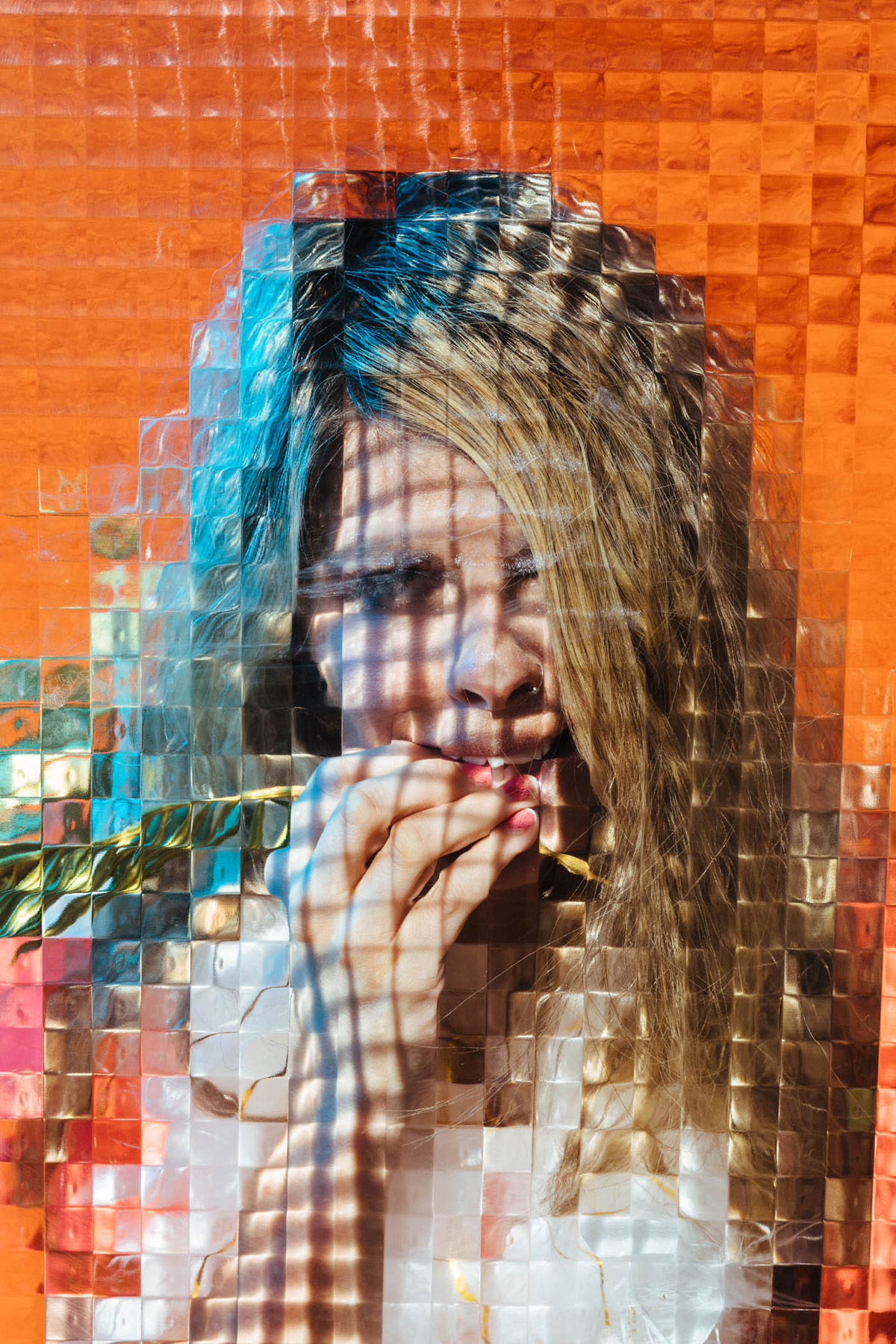
JH: Do you come from a family of photographers? Were you born into this?
MW: No, I do not come from a family of photographers or artists — most of my family and relatives work within or around the casino industry. My family, specifically my mom, has always been creative and encouraging throughout my whole life. She was always carrying a camera or video recorder to document family events. She was the historian of my entire childhood and family’s lives. I would always be fascinated by the devices and would eventually get my hands on them.
I just found a VHS from the early 90s on Thanksgiving day, in which I stole the camera and took 45 minutes of footage documenting my entire family and narrating everything I was filming in excruciating detail. It’s super embarrassing but I’m so glad I have it. I have a very supportive family, related and chosen.

Leslie
JH: Let’s talk about this new photo series. What are we looking at and why are we looking at it?
MW: So earlier in the year I travelled to Taiwan and was exploring this abandoned housing complex with my friend Victoria. I came across this unique plexi/window glass in an apartment and asked Victoria to stand behind it. I fell in love with this and thought someday I wanted to do a series that expanded upon this idea. I was lucky enough to win the Passion Projects grant to jumpstart it.
In recent months, I have been thinking about how our society is consumed with looks and stereotypes — even though we are taught to avoid judging a book by its cover, there is still something embedded in everyone to pick up visual clues to assess and form opinions about a situation or person prior to knowing them. This has become even more apparent through the current political state and ongoing discussion with Identity Politics. I wanted to create a series which removes the obvious and forces the viewer to look beyond initial judgments. This work is centered around identity and perceived identities.
I am a queer woman and recently realized this. I have always wanted to do an intimate portrait series, nudes, and a few other ideas, but never really acted upon them. I would picture the type of life I thought I wanted or idolized the choices friends would make, but always felt like it was out of my reach. I realized I was living for the expectations I thought others placed onto me but later realized I was projecting. The more honest I am with myself, the more honest I can be with my work
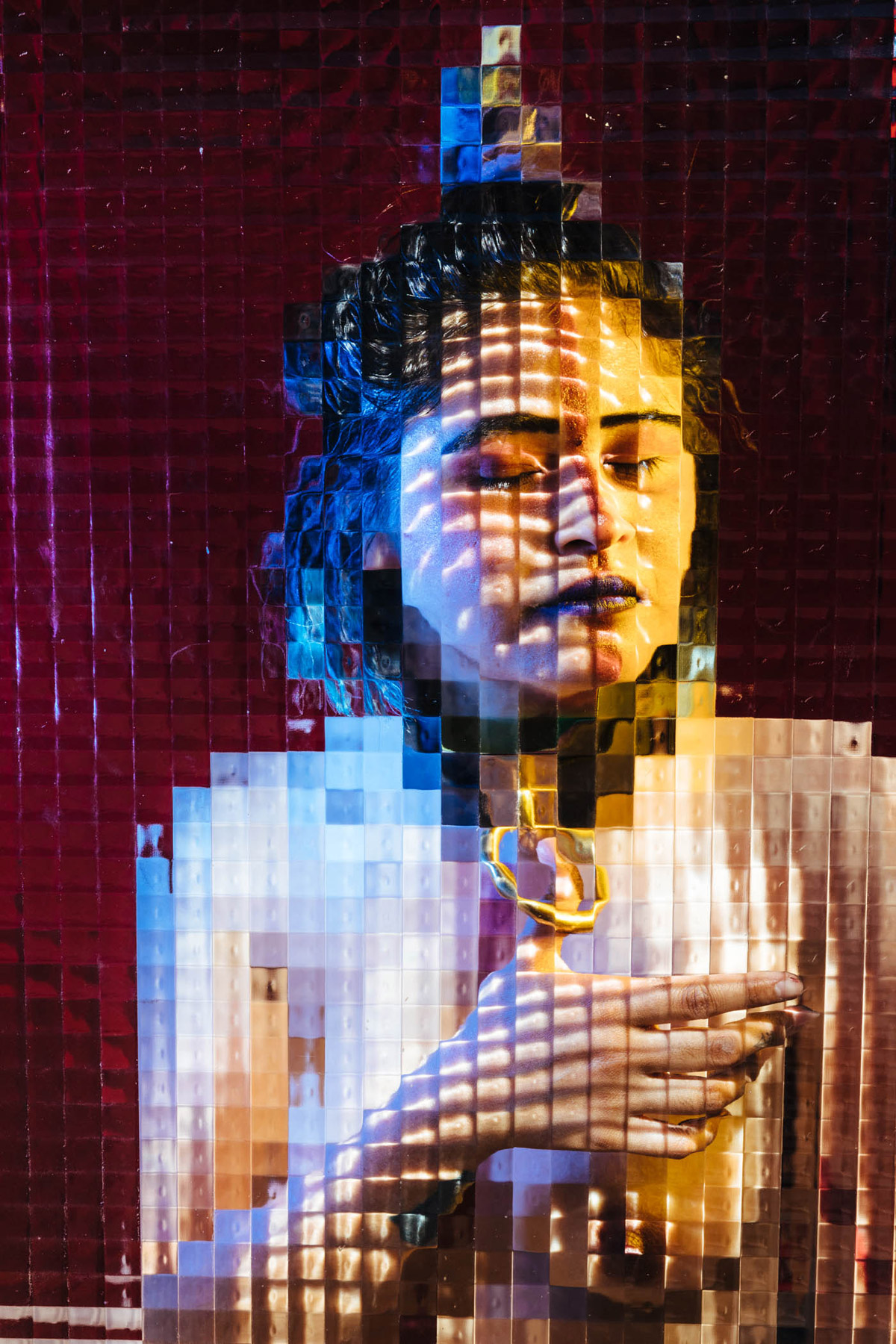
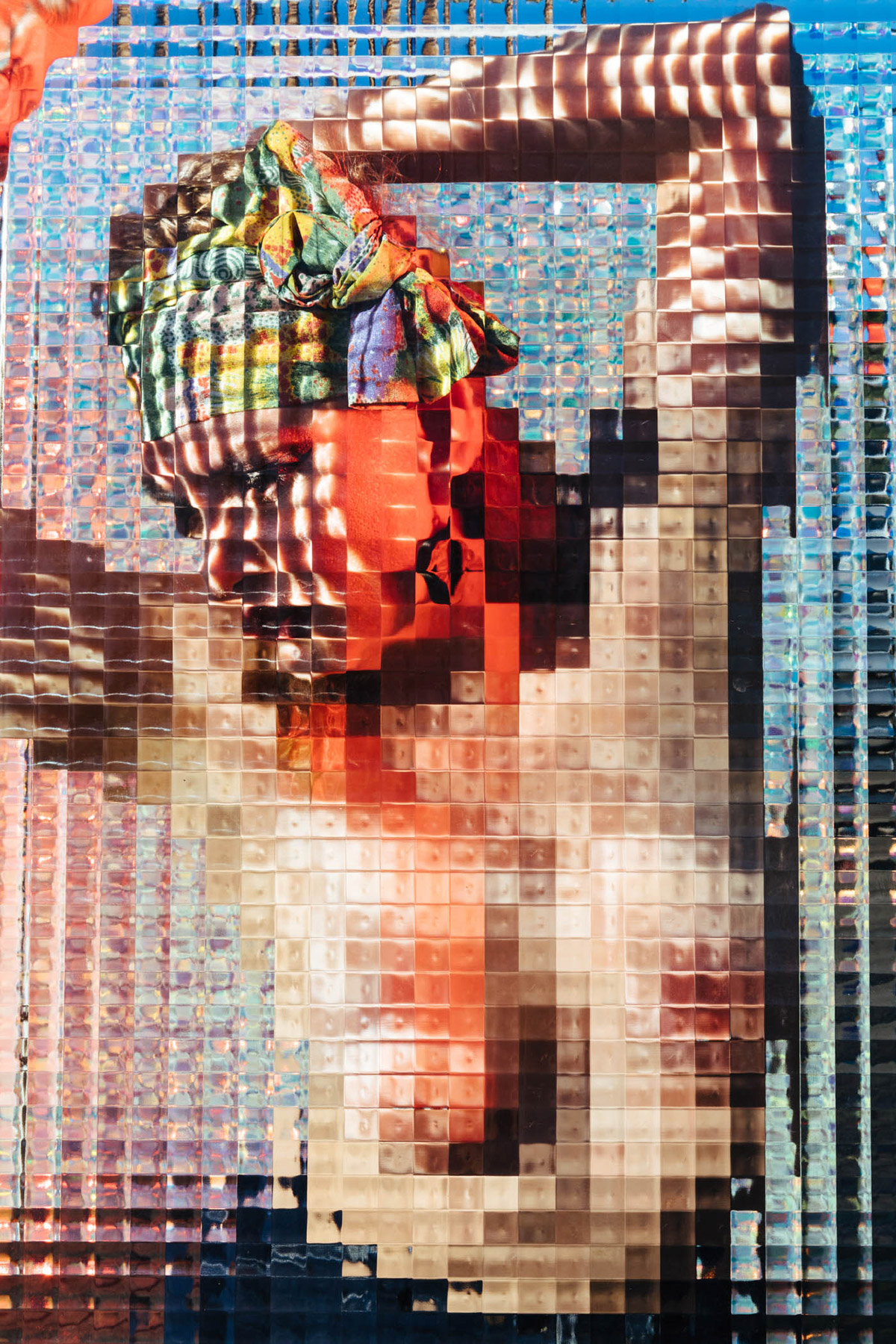
JH: Have you decided on a name?
MW: Yes… You, And You, And You.
It took me a lot longer than usual, and I knew that I wanted every portrait to be the name of the person I photographed. I started thinking of the importance of a person’s name and using it, knowing it, acknowledging it. When I was growing up, I really wanted to act. I did the whole circuit of theatre and auditions, and remember directors or casting agents always calling up people by “you” instead of their names. When they finally called you by name it meant you got the part. My name didn’t get called often, but I still kept trying. I often think of the power dynamics and power plays calling someone by their name connotes and the ramifications of how that can make a person feel.
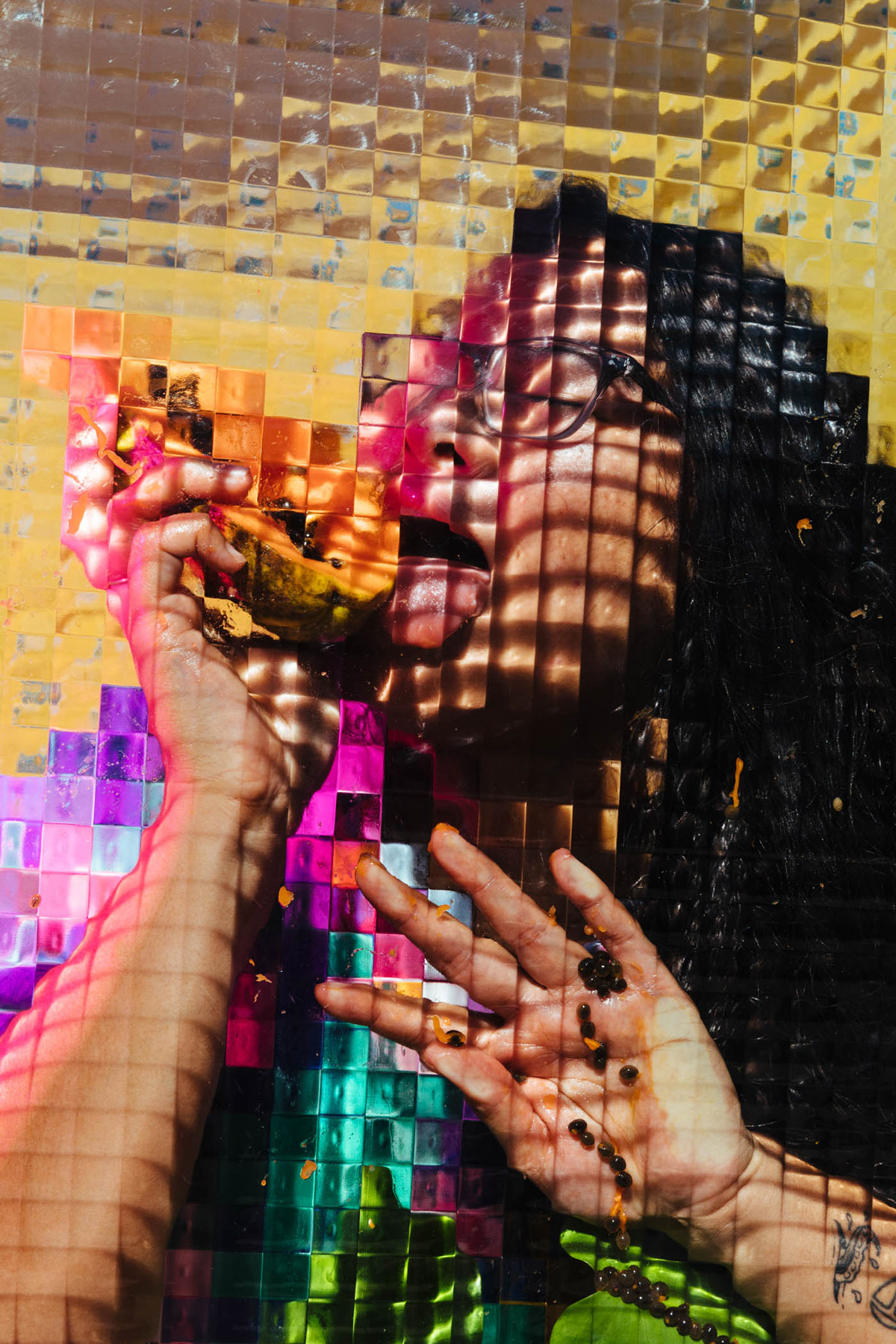
Jem
JH: One thing you mentioned to us in your pitch was the importance of creating it all in camera as opposed to adding effects in post. You used the word “honesty”, can you talk a little bit about that?
MW: I was taught to think “take the photo as close to the real thing as you can/want”, not to take a photo and then clone stamp out or completely alter its appearance. There is nothing wrong with that depending on what the images are intended for, but it just never really felt right for me. With today’s access to technology and information, everybody thinks they are a photographer. Using all these new modifiers on iPhones and smart gadgets, but having no idea how it actually all works. When I was showing someone these images, a stranger over my shoulder asked what app I used to create it and I thought to myself, “gotcha!” I felt like I was really onto something and it is just the beginning of my work with this technique.
We are bombarded daily with visual information, stories about fake news and dizzying headlines. It’s important to remove the noise. I do most effects in camera because I want the fantasy of the image to be real. Even if I am manipulating light to make the scene appear out of reality it still exists in real time. There is more ownership and labor in it for me, and I really enjoy that part of the process.
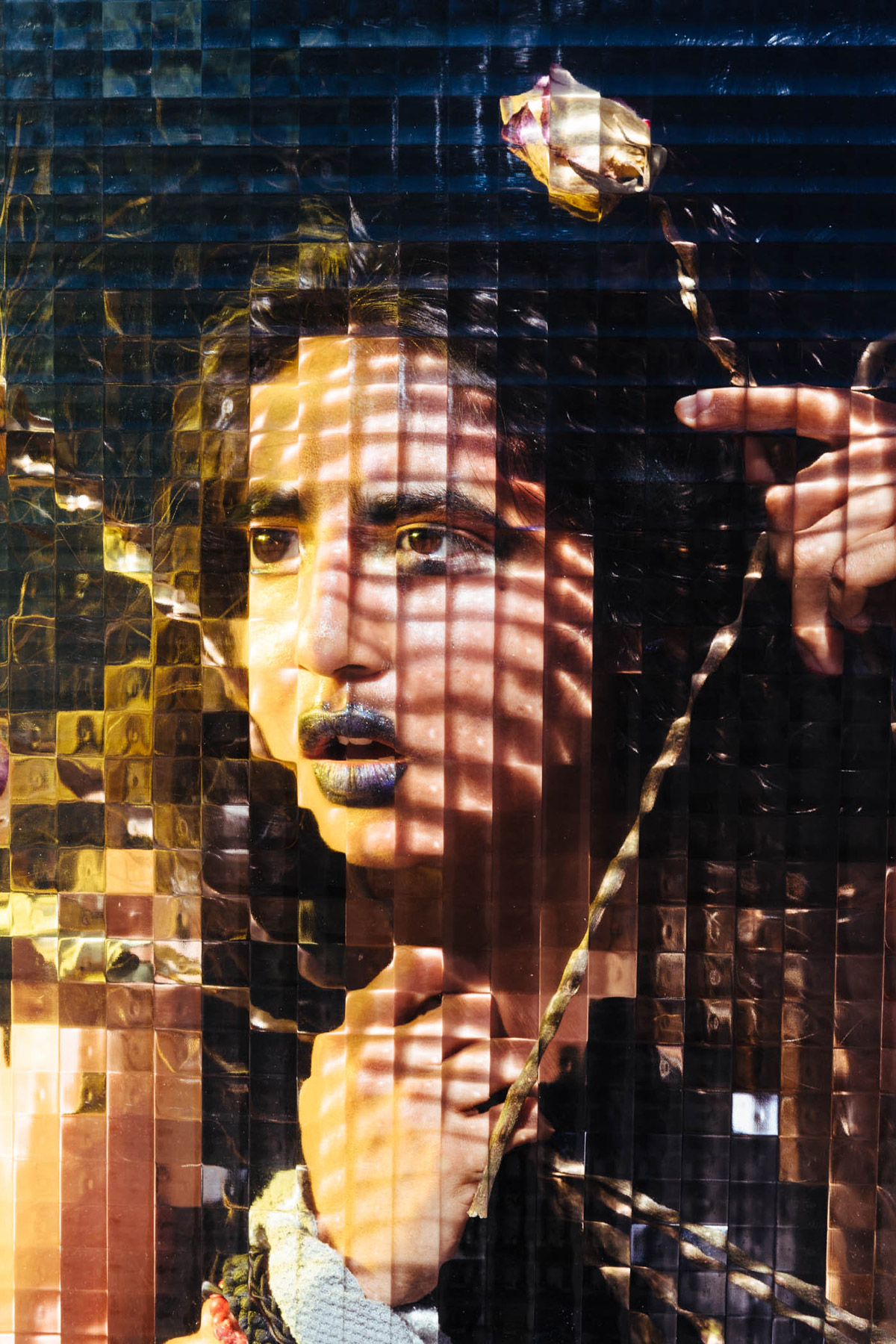
Karla
JH: Some of the portraits feel a bit more pre-meditated than others, what sort of direction were you giving each subject?
MW: Since I was on a tight deadline, once I got the glass I immediately started photographing friends. I asked if I could meet them in front of their house or a random parking lot and do a quick session with the glass and surrounding environment. The results were interesting, but nothing over the top until I shot my friend and artist Holly Lay who teased her hair to the gods and I used red velvet for a backdrop. The whole set of images kept running thru my mind until my friend Lorry came into town and I was ranting about wanted to reshoot the whole series similar to Holly’s image, but was not sure if I could pull it off. Lorry is an artist and has a background in set design and makeup, so she threw on a quick outfit and we ran outside to test a few ideas I was toying with.
I fell in love with Lorry’s set of images the same way I felt when I saw Holly’s, so I decided to switch the entire aesthetic. I started shooting new portraits while asking everyone I already shot if they would be willing to remodel for me. I want to note that everyone I asked were our friends, just regular people.
I wanted a safe space for my friends to experiment, to have a right to be weird, to be different, to love each other and be free and safe to do so without the judgment or close-mindedness of others. I asked everyone to create a heightened version of themselves out of character from their everyday to capture just that.
On a technical level, I wanted to implement the glass and studio setup to give the images a collaged and pixelated effect, confusing the viewer as to how it might have been created. For props or makeup, I let each person do whatever they fancied and offered some stylistic influence if asked. I found that having the glass in front of people really helped them let their guard down and not feel self-conscious, props were another extension of that.
Once we start shooting, I always say dumb things just to make the model feel comfortable and take some stress away. One funny thing was without much prompt, every single model ended up licking the glass or smearing their makeup all over it. I used a hefty amount of glass cleaner in-between shoots.
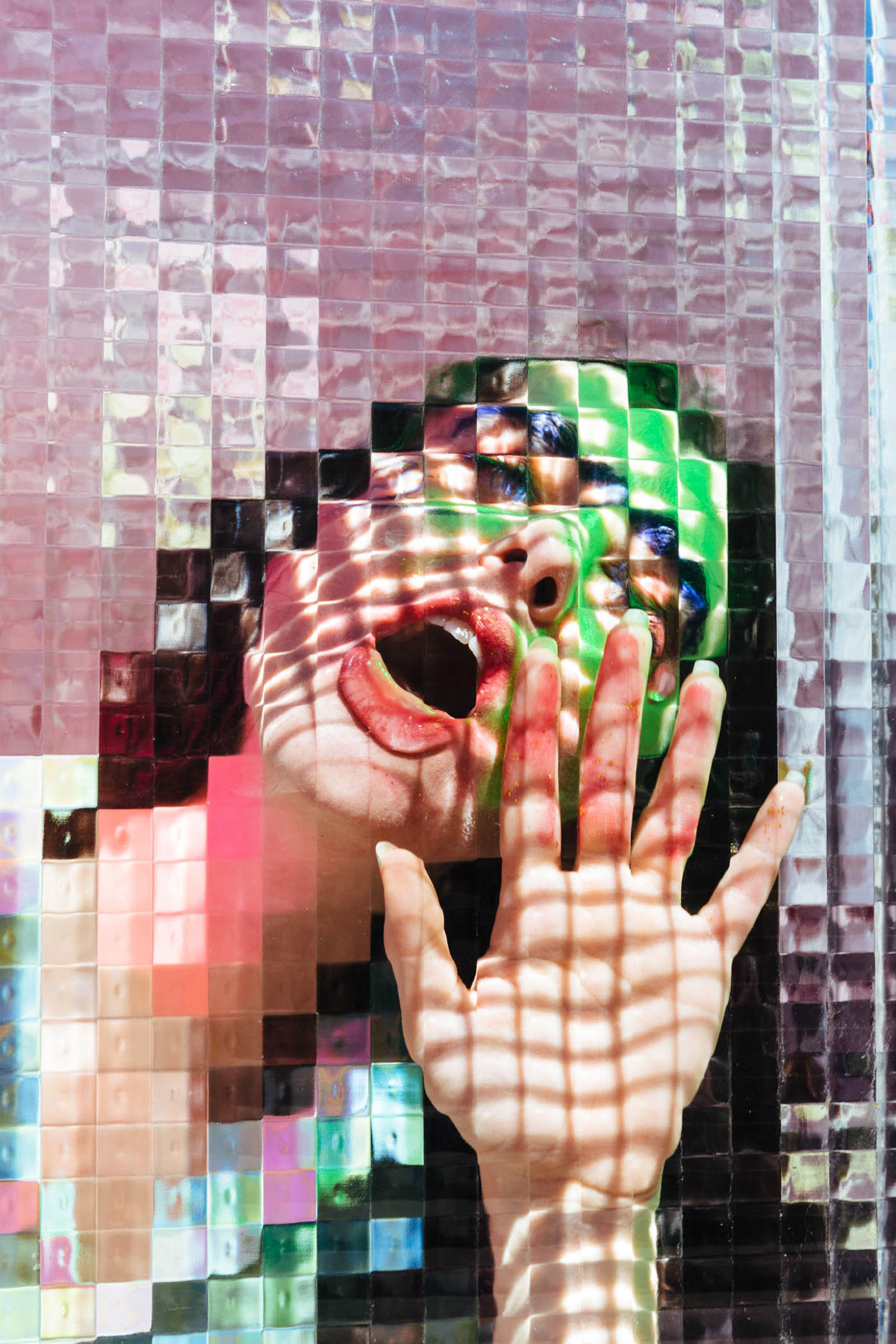
Andi
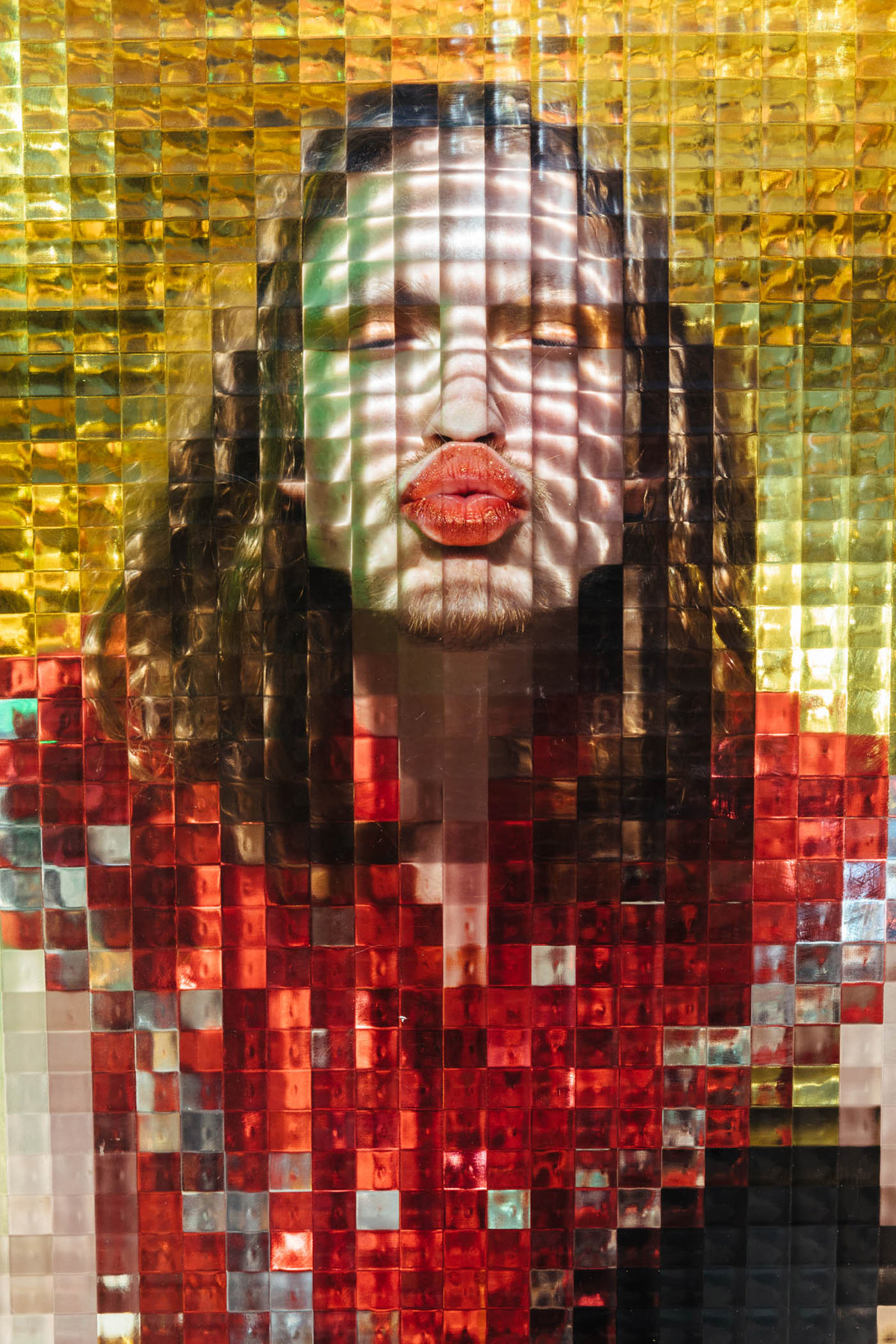
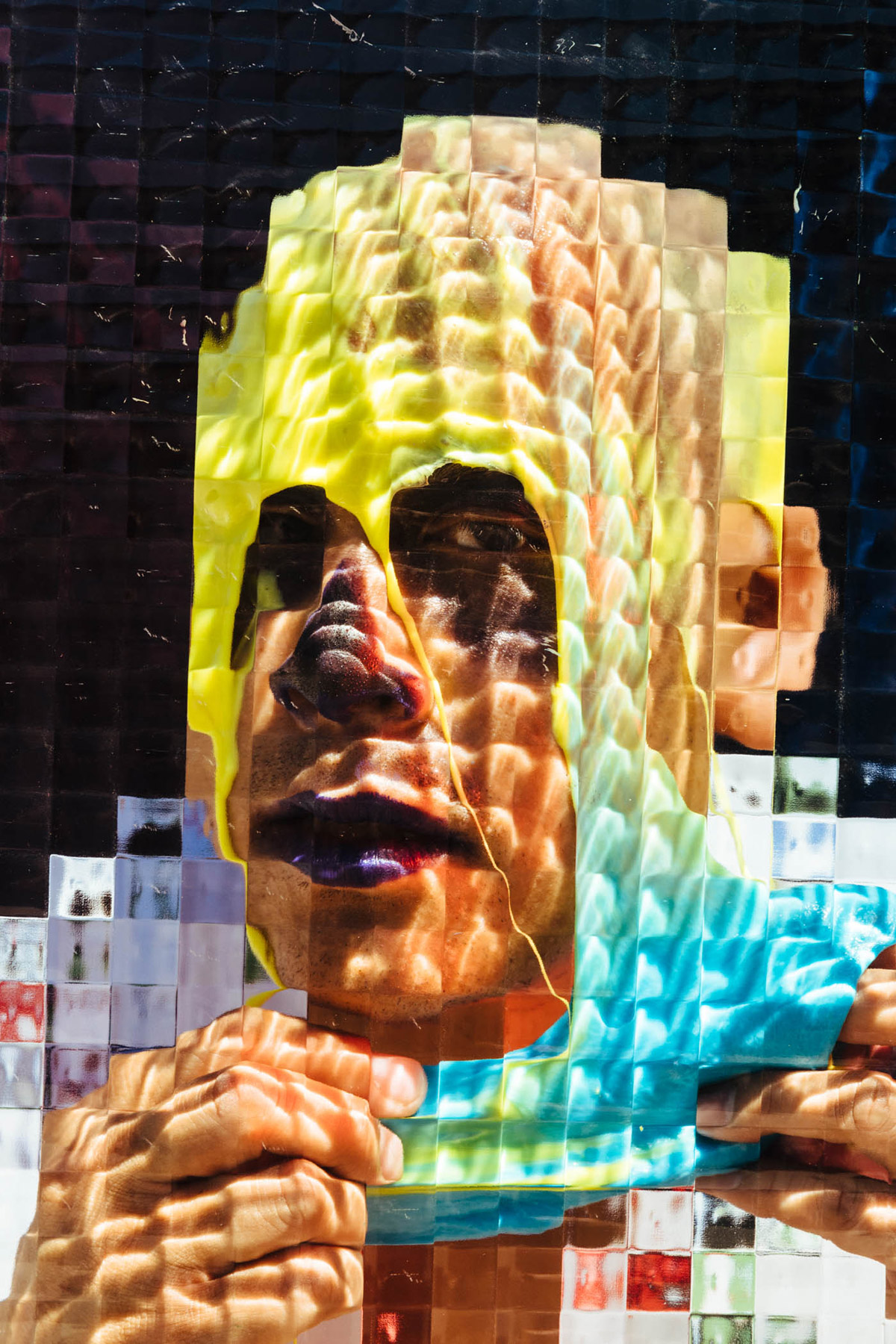
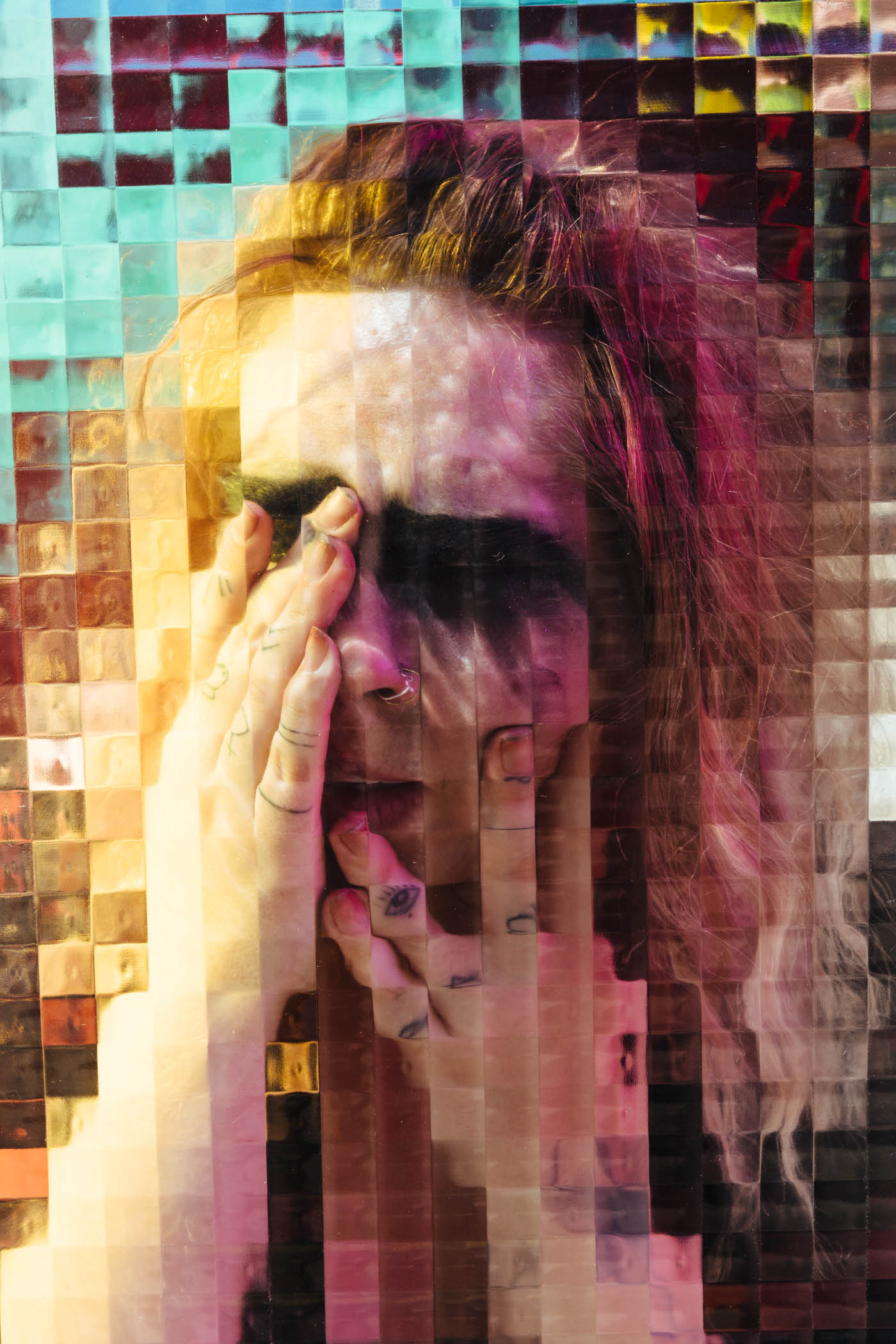
Alise
JH: What were the biggest challenges this project presented?
MW: There were a slew of challenges. First just finding the specific kind of glass I wanted and then finding a proper space to setup a studio. I was super lucky because my partner Karin and her roommates agreed to let me shoot the entire series in their backyard over two weekends. The next big hurdle was how to support the glass while shooting. I was intending to build a frame to hold it, but ended up having Karin assist during my shoots and securely hold the glass in front of the models.
I created a makeshift studio outside in order to use the sun as my main key light and cast shadows on the subject. My setup consisted of a background kit, light stands, foam sitting area, and the glass. The setup was simple, but despite the weather reports, as soon as I would put up a single light stand wind would appear out of no where.
One of my first intensive shooting days, I laid the glass down on a foam mat to be cleaned and quickly turned around because the wind was starting to knock over my background kit. I caught the kit and took a step back to regain balance, when I heard a loud shatter. My heart sunk a little and I turned around to see that my heal clipped the corner of the glass and broke about a 12 inch piece off. I was so relieved I didn’t break the whole piece, but actually really beat myself up mentally. The glass was like an imaginary best friend, who had been holding my hand and supporting my creativity the whole time, and I fractured her. I got a little eccentric, probably because all these shoots were being taken in 110-degree heat. I forgot to mention that August is one of our hottest months.
Not only was I subjecting myself to these working conditions, but I asked all my models to sit outside in full sun for 10 to 15 minutes with a giant magnifier (the sheet of glass) glaring on them. I really can’t thank them enough for enduring those conditions.
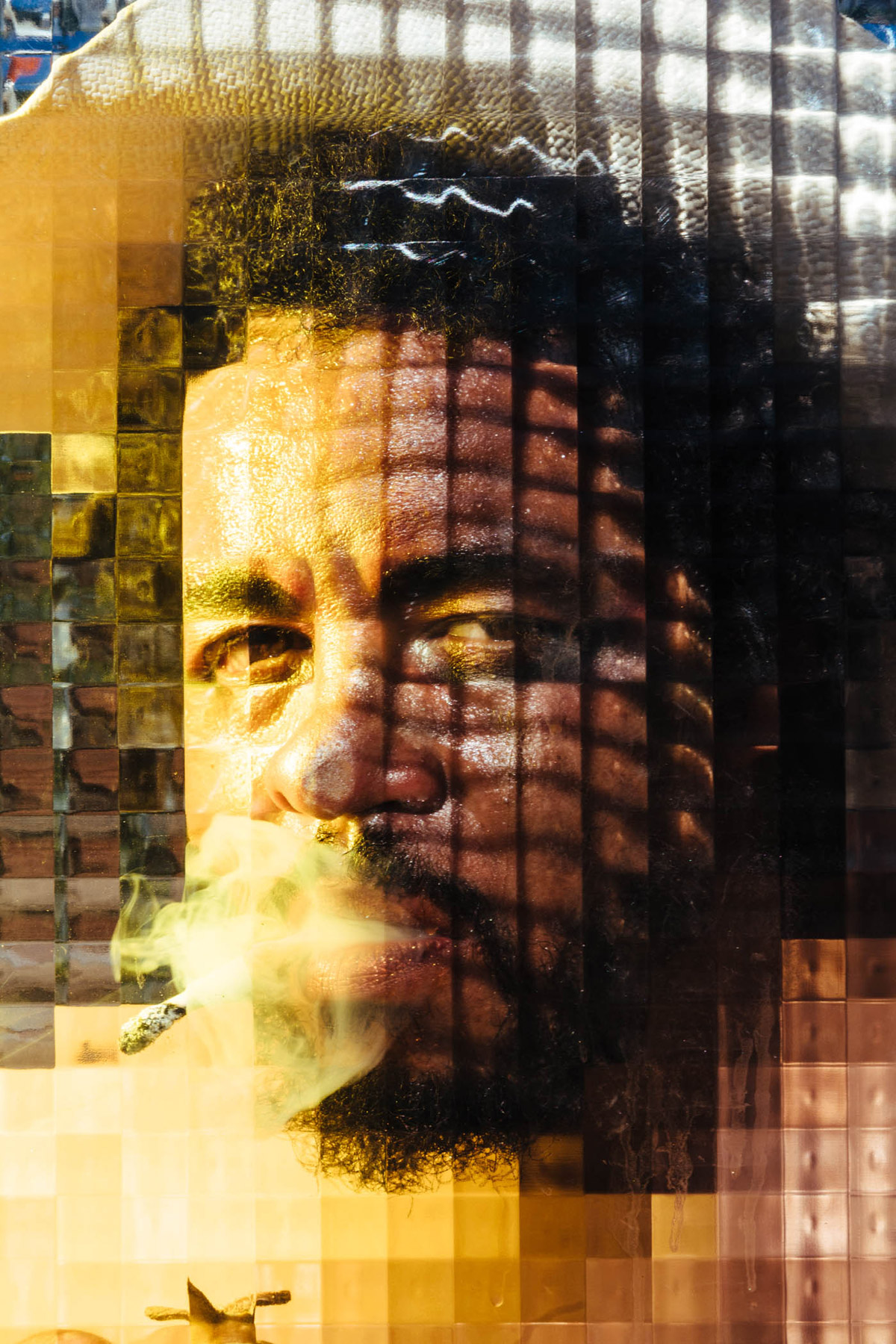
Brent
JH: You have quite a diverse selection of work now in your portfolio, is there a common thread? Or maybe something that you’re realizing is of particular interest to you?
MW: I tend to think of myself as consistently inconsistent. I have a quality level that I always try to maintain, however, my interests are all over the board. I never want to stagnate and am always trying to develop and grow my skill set. A lot of the work I create is often influenced by my personal growth and periods in my life.
My main interest focuses on photography and installation — in particular, the overlap between both fields, specifically the phantom realism of the photographic image to explore the elusiveness of place, time, and human memory.
I have been greatly influenced by growing up in Las Vegas and spending vast amounts of time creating work inspired by the surrounding deserts. My perception is induced by the juxtaposition of a permanent environment always in flux and the sudden notion of feeling completely alone even when surrounded by a sea of people.
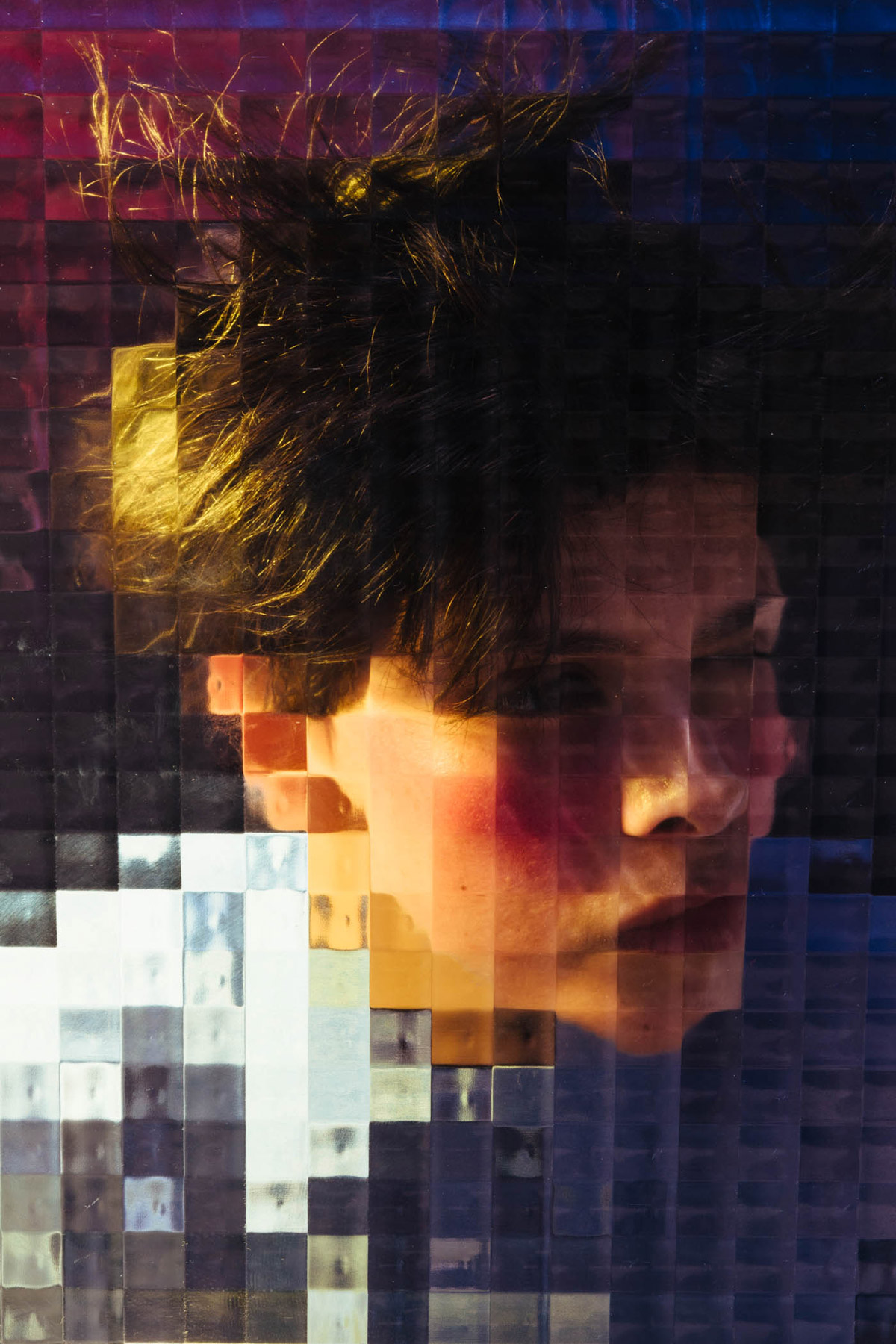
Sinai
JH: What’s the next project on the horizon?
MW: I am currently working on a pretty large site-specific installation with artists Karin Quindo Miller and Mary Sabo. We are keeping details pretty hush at the moment but hoping to have it completed and revealed by the end of November.
My work and practice is shifting into a more sculptural approach to constructing images. I want to start making dioramas and building sets to photograph aside from impromptu topography. I want to continue using this photo process on a few other projects, including a nude figurative photo series and another being a music video. The photos are pretty amazing to me, but using this effect in the video is something completely different and intriguing.
And lastly just figuring out how to sustain my work and personal life — until I win the Megabucks.
Booooooom Shop: Tomorrow’s Talent 4
Featuring the work of 60 fine artists and illustrators, tomorrow’s Talent 4 is now officially available in our shop!
Learn more2024 Booooooom Photo Awards
Calling all photographers! The Booooooom Photo Awards are back and officially open for submissions!
Learn moreRelated Articles
